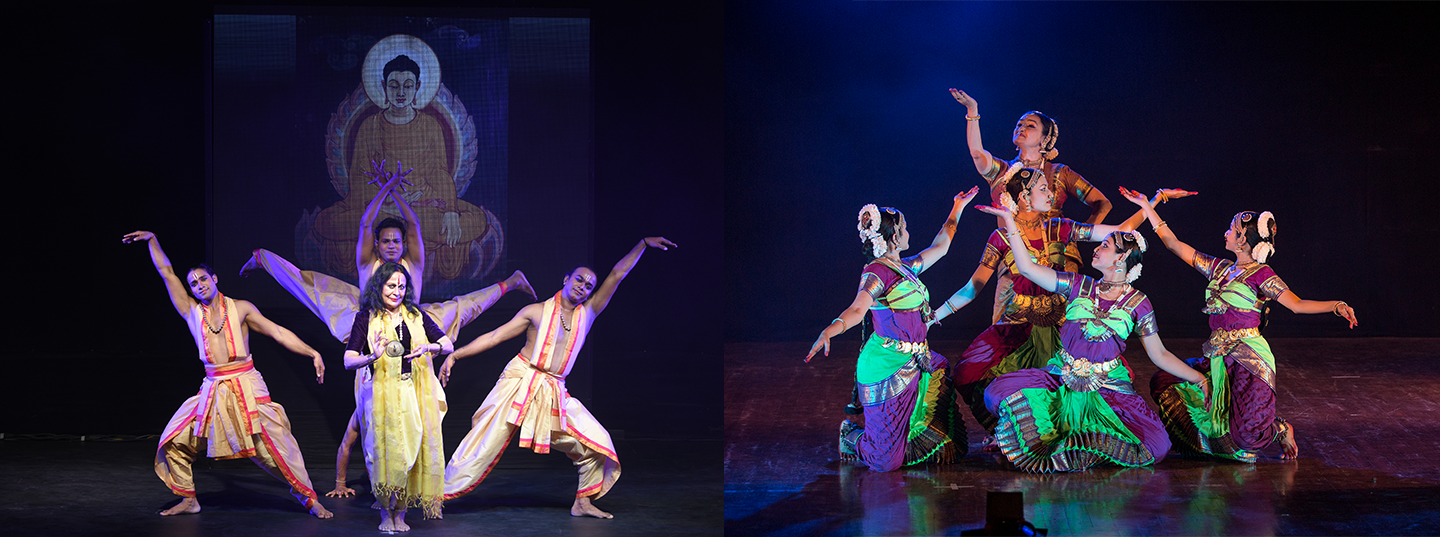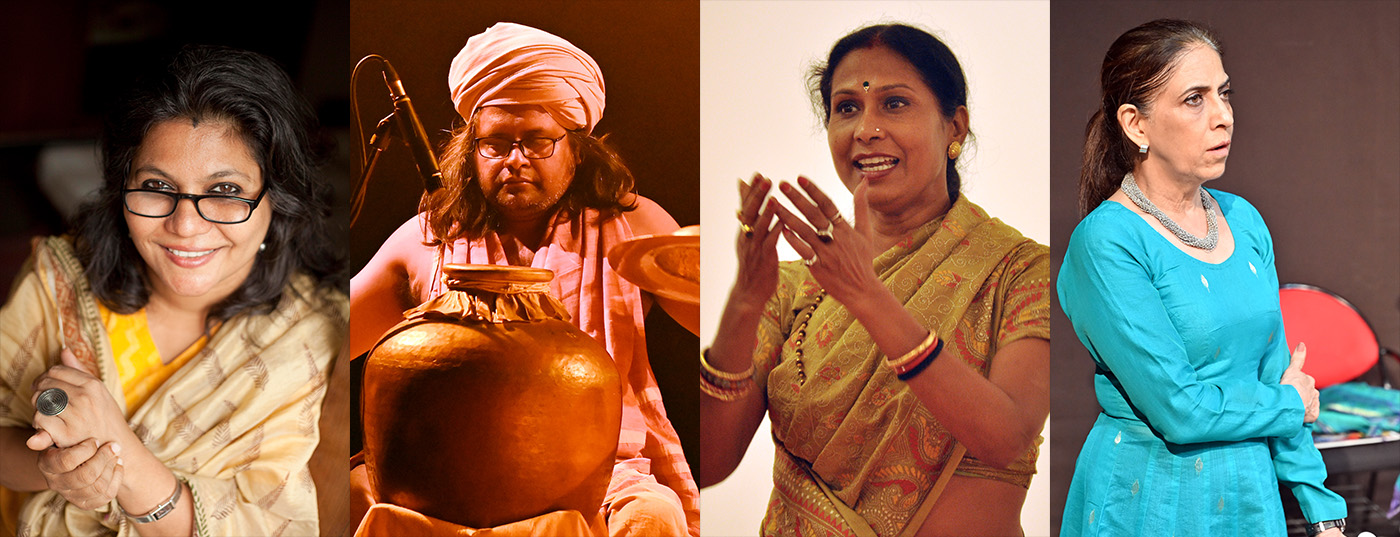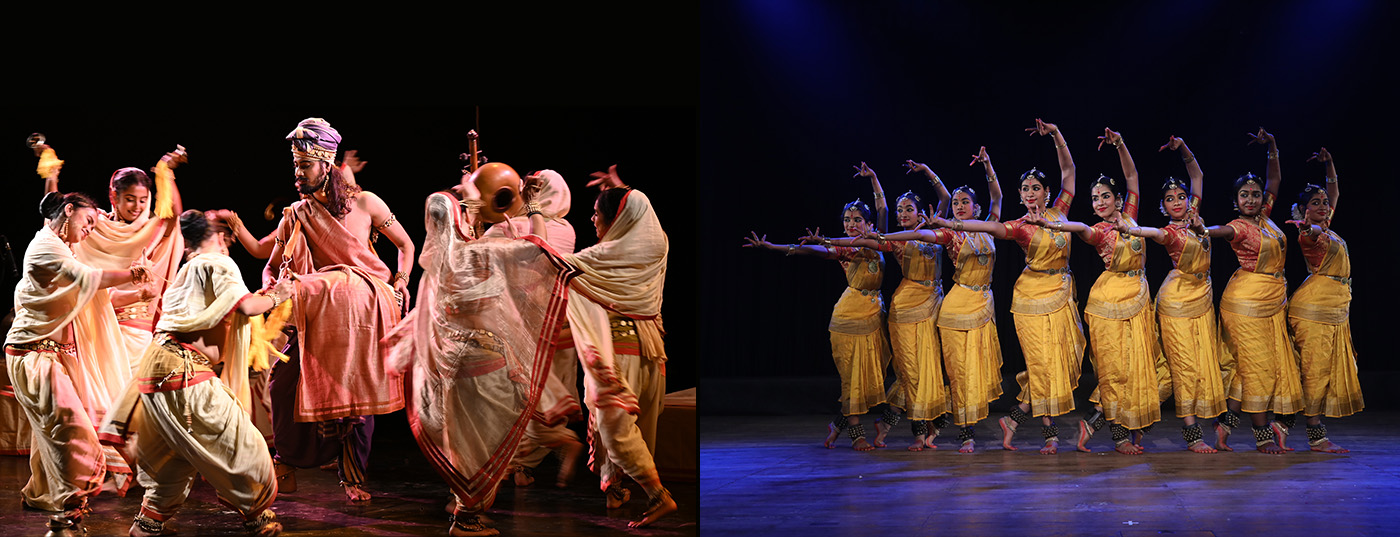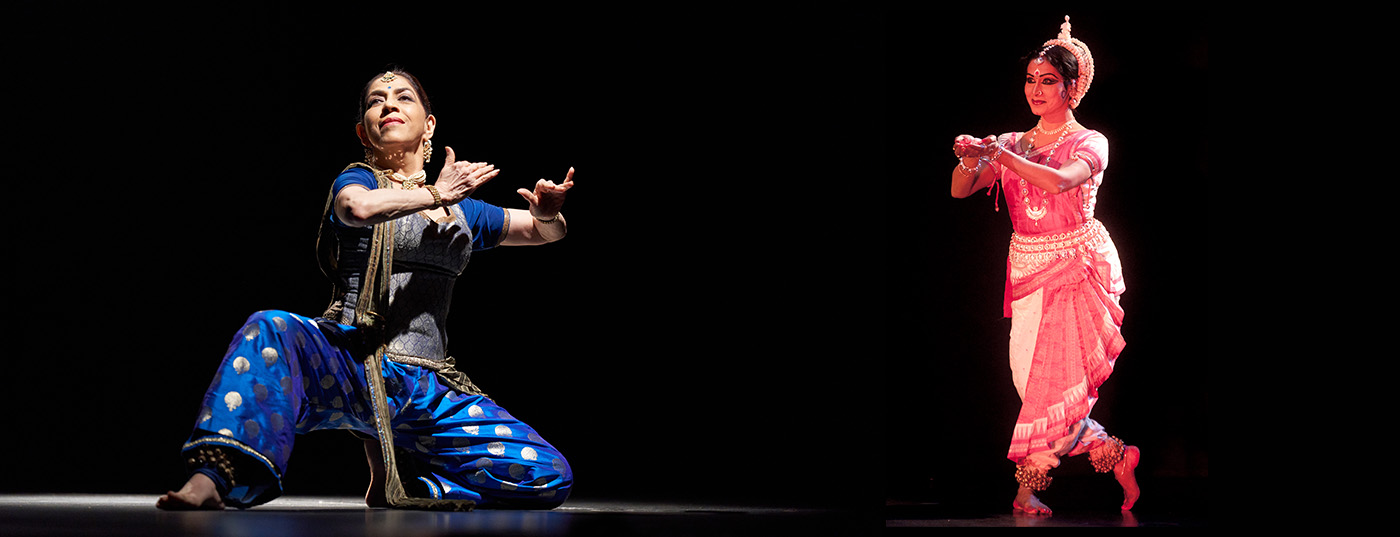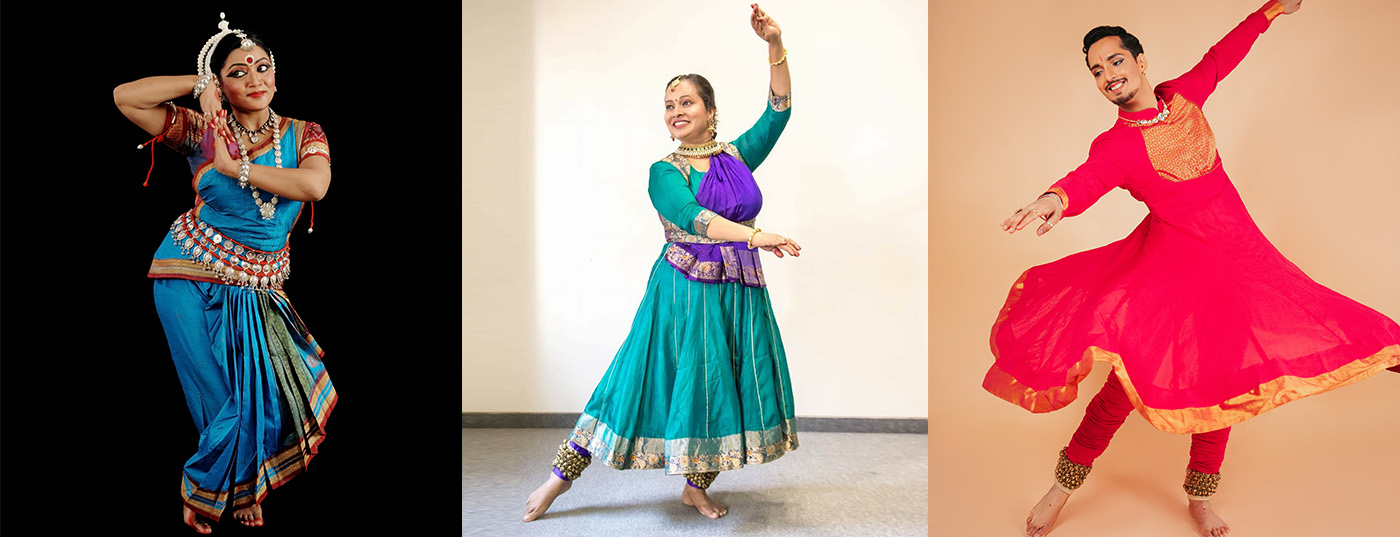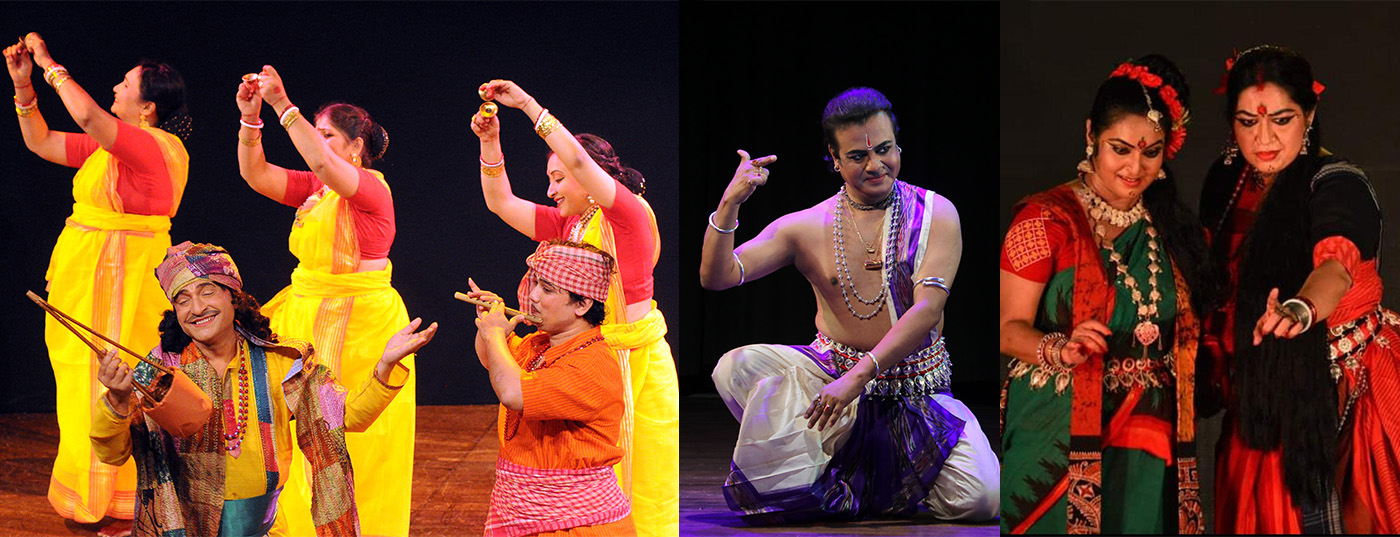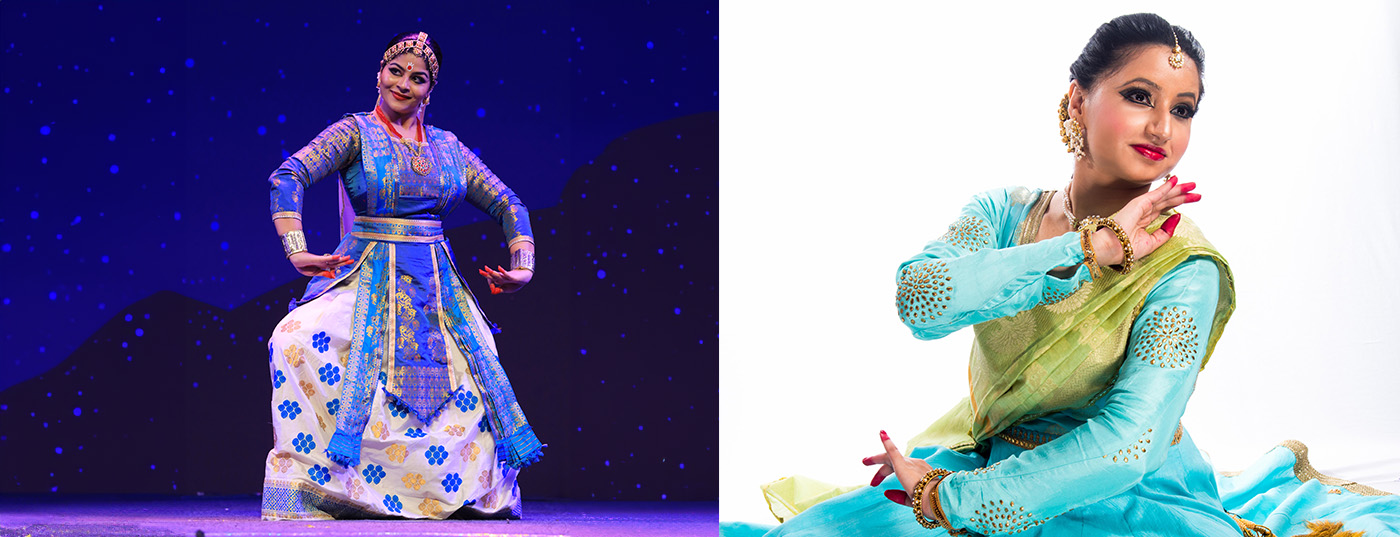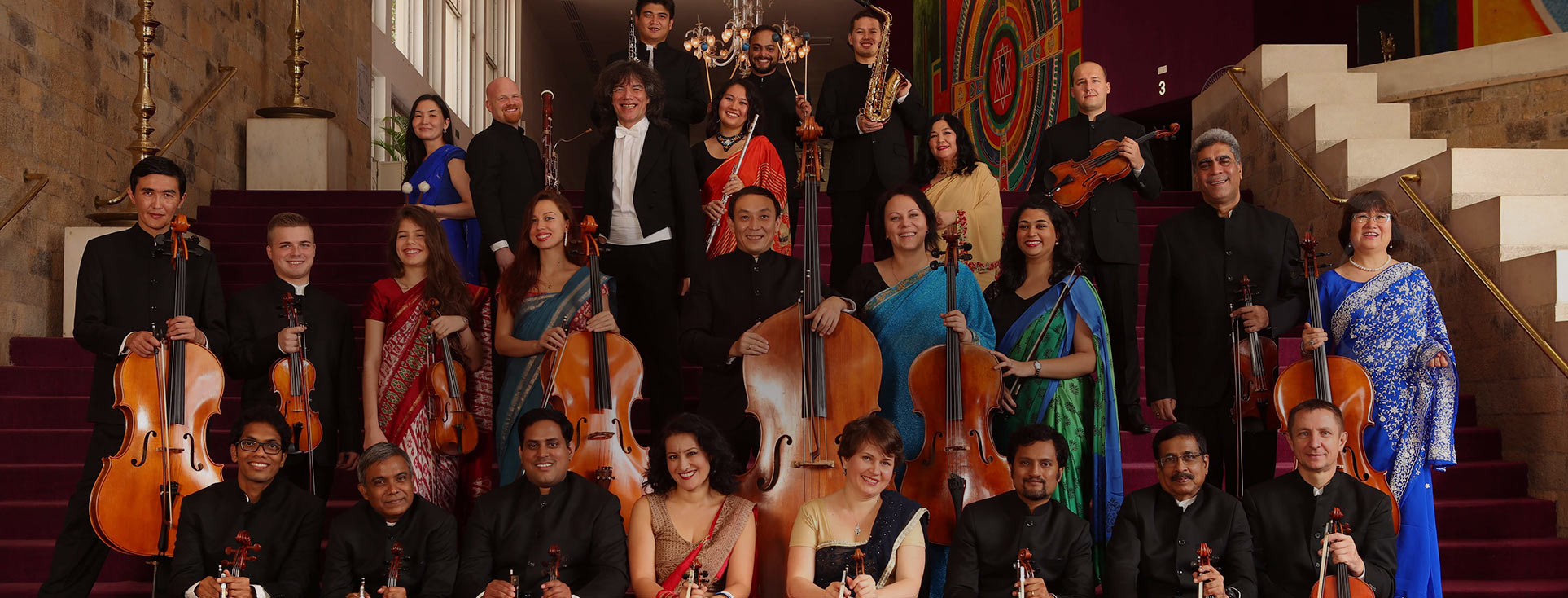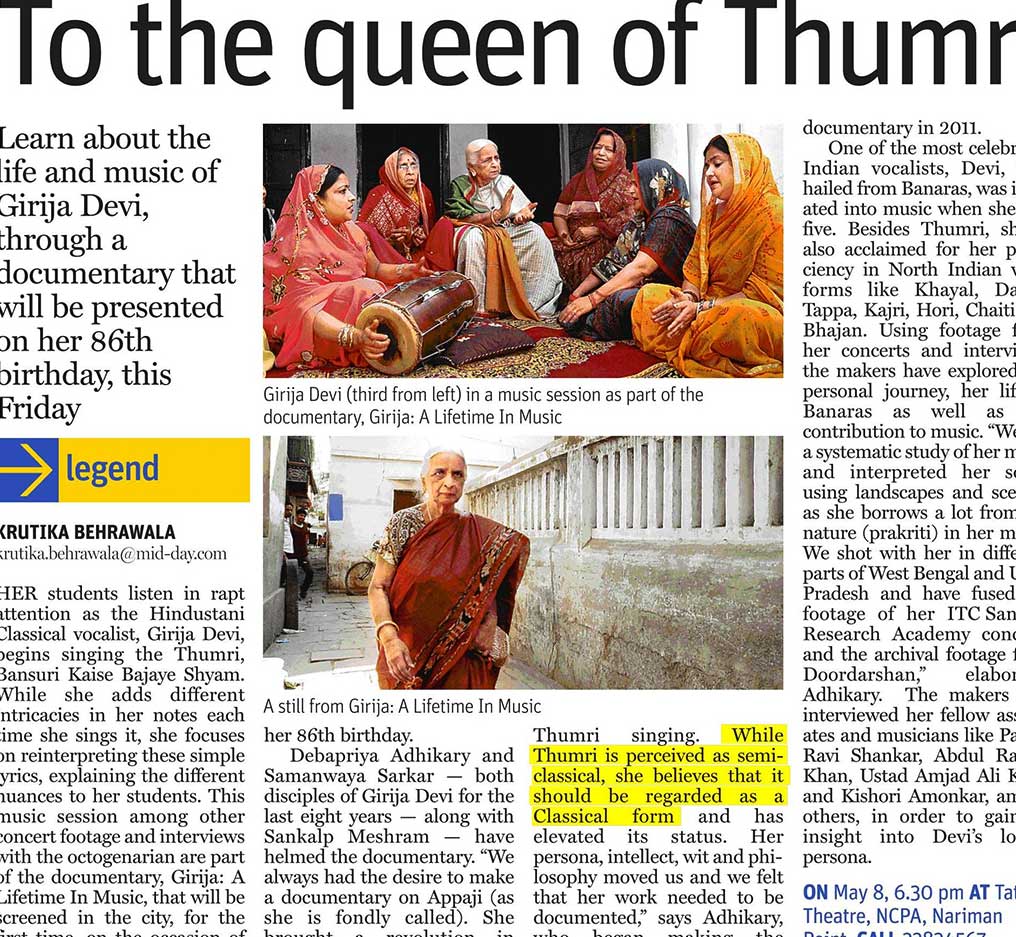-
Venue
Tata Theatre -
Date Time
28 April 2023 | 6:30 pm
-
Age Limit
6+ -
Member Price
Rs.180, 270 & 360/- -
Non Member Price
Rs.200, 300 & 400/-
Event Details
Sankalp se Siddhi by Dr. Sonal Mansingh
The iconic cultural personality of India & Member parliament (Rajya Sabha), Dr. SONAL MANSINGH has been unique among dancers who has mastered multiple Indian classical dance forms from different parts of India like Bharatanatyam, Odissi and Chhau. She is a great scholar and seasoned art administrator who has performed, given lectures and conducted workshops in 90 countries around the world.
As the Founder-President of Centre for Indian Classical Dances (1977) she has trained several talented performers who are carrying the message of Indian culture all over the world.
She is the recipient of the high civilian honours of Padma Bhushan (1992) and Padma Vibhushan (2003) from the President of India.
She has been honoured with Sangeet Natak Akademi Ratna (Fellow of Sangeet Natak Akademi)
She is also nominated as one of the NAVARATNAs for Swachh Bharat Mission by Prime Minister Shri Narendra Modi.
She has served as chairperson of National Sangeet Natak Akademi and serving 2nd term as Trustee of Indira Gandhi National Centre for the Arts.
ARDHA-NAREESHWAR
The concept of two primal elements as being the very basis of creation is an old found in every civilization. In Indian mytho-philosophy, one of the most endearing and enduring visions has been that of being containing within IT the attributes of Female and Male. The classical name for this Being is ARDHA-NEREESHWAR.
In a series of eight verses Adi-Shankracharya describes his vision of the primordial form , half of which is Parvati and other half, Shiva.
DASHAVATARA
An awesome description of the evolutionary cycle from the Indic lore. Ten incarnations of God Vishnu are about the primordial to modern times and how the aeonic cycle will end only to begin again. The Dashavatara are as follows: Matsya – Fish,Kurma – Tortoise, Varaha – Wild Boar,Narasimha – Man-Lion,Vamana – Midget,Parashurama – Warrior, Rama – Nobel King, Balarama – Agriculturist, Buddha – the Compassionate and Kalki – the Finality
ARTHASHRINGARA by Dr. Sandhya V Purecha
Based on Kalasa Karanas from Kumbharaja’s Nritya Ratna Kosha woven into Kalidas’ lyrical poetry Rutusamhara
Concept, Choreography & Direction – Dr. Sandhya V Purecha
Sarfojiraje Bhosale B.N.T.&R. Centre’s Repertory Group headed by its Artistic Director Dr. Sandhya Purecha, an exemplary Bharatanatyam Performing Academician, an Ingenious Choreographer-Innovator, a Prolific Writer and an erudite Scholar-Researcher of Sanskrit vis-a-vis Indian classical dance.
Richly honoured and widely travelled, the Repertory Group has staged performances at top national festivals across the country some of which are Simhastha Kumbha 2016 – Madhya Pradesh, Nritya Sanracha – Agartala by Sangeet Natak Akademi – New Delhi, Poetry Festival – Tripura by Sahitya Akademi New Delhi, Delhi International Arts Festival – New Delhi, Konark Festival – Odissa, Khajurao Festival – Madhya Pradesh, Taj Festival – Agra, Mamallapuram – Tamil Nadu, Modhera Festival – Gujarat, Thirupati Festival – Andhra Pradesh, Elephanta Festival – Maharashtra, Jhansi Festival – Uttar Festival, Gorakhpur Festival – Uttar Pradesh, Kalidas Festival – Madhya Pradesh. Internationally the group has presented the riches of Indian culture at Italy, South Africa, Moscow, Scotland and many more.
With Dr Purecha’s highly imaginative mind, her creativity mediates between the moral commitments to the traditional form blended effortlessly with contemporary experiments. An interface of technical mastery and creative expressionism, the productions staged by the Repertory Group introduce a vast repository of movements and an intensely versatile body language making the classical dance comprehensible without compromising on aesthetics. Some of the notable thematic and research-based creative choreographic ensembles are Arthashringara, Ashtanayika – Geet Govind, Brahmananda, Discovery of India, Guru Dakshina – Abhinaya Darpanam, Jain Philosophy – Bhaktamar Stotra, Om Sarvam Shivamayam, Preachings of Buddha – Buddha Charitam, Shivaleelamrutam to name a few.
As a Performing Academician, Dr Pureccha has enlivened various Shastras, ancient scriptures on dance with their application into an innovative body language introducing a vast repository of movements to the classical dance idiom thus breaking the shackles between Shastra (theory) and Sampradaya (practice).
This choreographic ensemble is based on Dr. Pureccha’s pioneering research book ‘Theory & Practice of Kalasa Karanas & Sthanaka-Mandala Bheda’ from Kumbha Raja’s Nritya Ratna Kosha; ‘Artha’, the meaning, as expressed in the Kalasa Karanas and ‘Shringara’, its adornment by Kalidasa’s lyrical poetry Rutusamhara.
Kalasa Karanas, basic dance units of concerted movements of the hands and feet are imitations of elements of nature like the lightening, the pregnant female deer, the frog, the crane, the swan and the sword. With a firm foundation of the ancient dance scriptures, Dr Pureccha has specially created novel, original and artistic movements of the Kalasa Karanas drawing inspirations from nature which have also contributed in forming a unique body language expressive of nature, animals and birds in accordance with local practice (Lokdharmi). This choreographic transformation of these Kalasa Karanas is an unprecedented adornment to Indian dance practice.
No finer poet than Kalidas and none other poetry than Rutusamhar describes with elegance and eloquence the beauty and grandeur of nature. Kalidas’ Rutusamhara, the gathering of the seasons, is a descriptive poem that evokes those feelings which are awakened by the changing seasons in every pair of lovers. The six seasons that parade before us are Grishma (Summer), Varsha (The Rains), Sharad (Autumn), Hemant (Early Winter), Shishir (Winter) and Vasanta (Spring).
This production is indeed a visual delight for performing artists, scholars, art critics as well as art connoisseurs.
Arthashringara
A creative choreography based on Dr. Sandhya Purecha’s research on Kumbha Raja’s Kalasa Karanas (rare desi Karanas) from the 15th century Sanskrit treatise Nritya Ratna Kosh woven into Kalidasa’s lyrical poetry, Rutusamhara
The six seasons parade before us showing their effect on mankind, animals and nature.
Grishma Rutu
The Mriga and Manduka Kalasa demonstrations precede the onset of summer, marked by the scorching heat that has rendered wild animals like the wild boar, snakes, ants, birds and humans parched and the blazing forest fires have withered and shrivelled the tender crops and trees. The women get respite by bathing in fresh water but Lord Krishna comes and steals their clothes. Animals like tigers, deer and elephants irrespective of their enmity gather around the water body to quench their thirst.
Varsha Rutu
The Vidyut Kalasa, movements inspired by lightening mark the advent of the monsoons where the people are playing with water and enjoying the cooling showers. The Peacocks dance, and the elephants, bees and deer relish the rainy season. The joy and relief the rains bring is portrayed through the people rejoicing the rainy season as described in the second chapter in Rutu Samhara of Kavi Kalidas.
Sharad Ritu
The call of the graceful swans performed through the Hamsa kalasa indicates the arrival of Sharad Rutu, or autumn, where the flowers are bloomed and lakes filled with beautiful aquatic birds. The beautiful nayika revels in nature and the season ends with the play of Raas, celebrated on Sharad Poornima.
Hemant Rutu
Following on, the fourth season of harvest or Hemant Rutu is welcomed with the nicely grown crops that are collected and the delighted women engage in the processes of harvesting, threshing and stocking. Young girls look at themselves in beautifully decorated mirrors and in the mirrors they see love marks by their lovers. The crane birds are also shown in flocks flying high in the sky.
Shishir Rutu
The Shishir Rutu is the season of love and passion where couples find warmth in togetherness, and this passion is also exemplified in the birds (shown through the movement of cranes). The laments of the Virahotkanthita Nayika are felt through the deep grief she express whilst remembering her lover.
Vasant Rutu
Spring season is the season of rebirth, rejuvenation, renewal, resurrection and regrowth. Beautiful nature is depicted through the movements of trees full with leaves and flowers, the birds and animals like peacock, crane, deer join in the joyful season which concludes with Tillana, the pure dance of joy abandon.
Box Office now Open.
